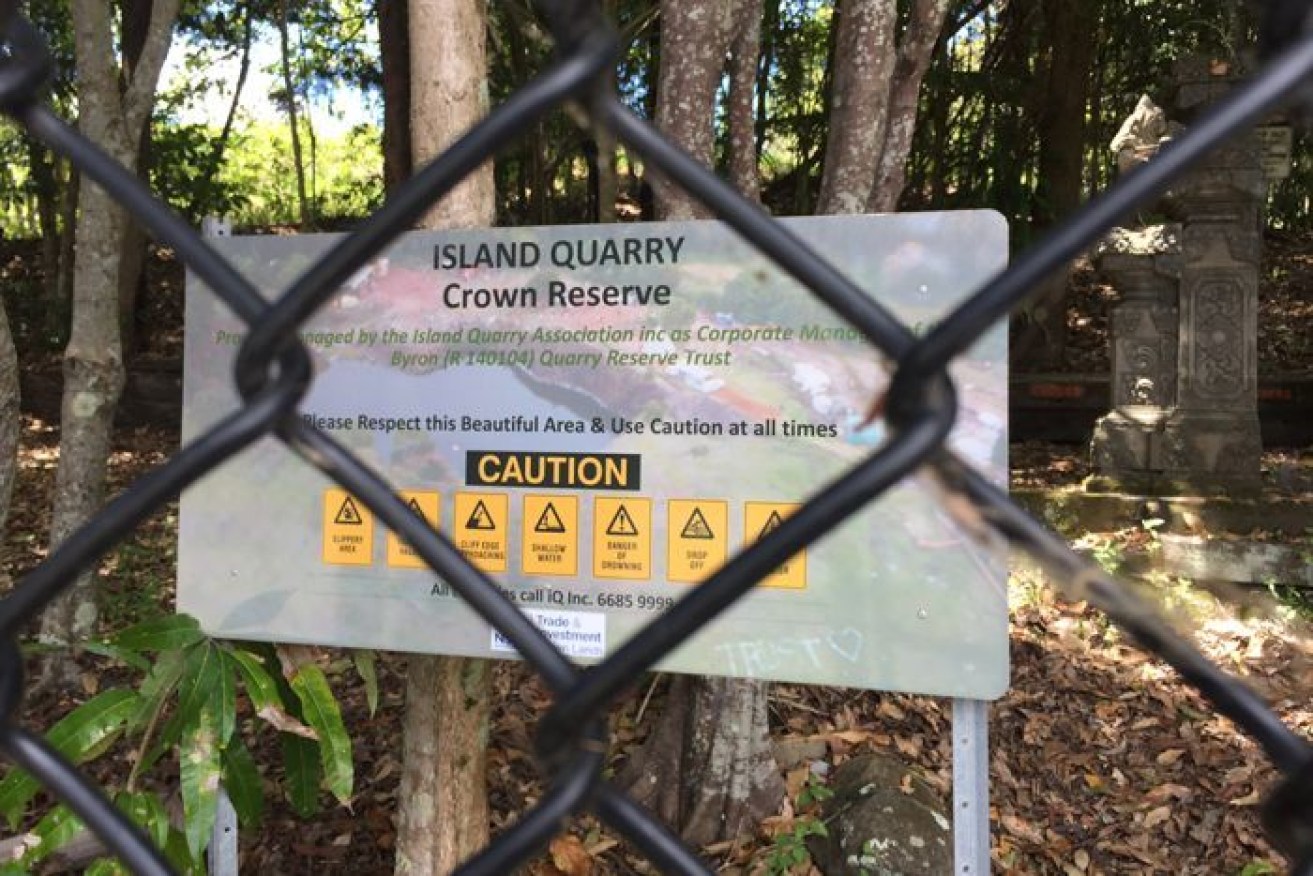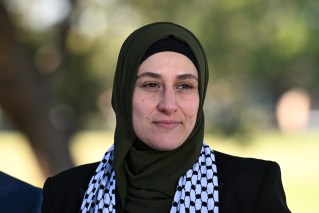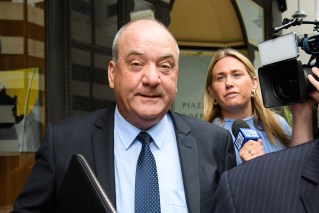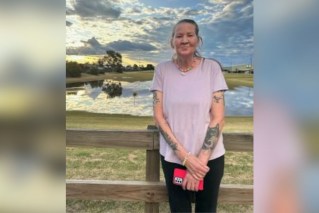Inquest hears about known dangers of Byron Bay quarry before death


Security fencing at the Island Quarry was coincidentally installed weeks after Brendan Vickery's death. Photo: ABC
The beauty of Byron Bay belies a dangerous secret you will no longer find promoted through social media – a popular waterhole on the outskirts of the northern New South Wales town which was then on everyone’s to-do list.
The death of Victorian man Brendan Vickery changed that.
Many are now wondering why it took a death for the dangerous pursuit of cliff jumping to stop.
It was not the first time someone had been seriously injured, and the local emergency doctor at the Byron Bay Hospital had been calling for action at the site since 2012.
A coronial inquest is underway at Byron Bay to assess the dangers at the quarry site, the effectiveness of safety fencing and signage, and whether that was a contributing factor in the death of 20-year-old Mr Vickery.
First time jumping off cliff
On February 23, 2014, Mr Vickery and friends were one of many jumping into the cool but murky depths of the waterhole.
The Island Quarry is surrounded on three sides by sheer cliffs, and until a few years ago it was heavily promoted on backpacker websites.
Locals have used it as a swimming hole since the former quarry filled with water about 50 years ago.
Mr Vickery’s friends told the inquest they were experienced cliff jumpers and had taken the plunge at the Island Quarry before.
It was Mr Vickery’s first time. His friends said he was nervous and decided to jump from a ledge a little lower down.

The Island Quarry site at Byron Bay was popular with backpackers until 2014. Photo: ABC
He was seen to jump from the cliff around a height of 8 metres. He surfaced, then swam to the edge of the waterhole.
Mr Vickery was last seen hanging on to the edge of moss-covered rocks. His body was found the following day, submerged three metres underwater.
Concern about number of injuries
Pathologist Brian Beer conducted the external examination of Mr Vickery’s body.
He told the inquest, “On the balance of probability I would put drowning first, but I wouldn’t exclude other causes [of death].”
Mr Vickery is the first death at the quarry, but a list of serious injuries precedes his accident.
Byron Bay Hospital emergency medical specialist Rob Davies told the inquest that between November 2011 and January 2014 there had been nine cases of people injured while jumping at the quarry.
Six of those involved fractures of the spine, including some with multiple vertebrae compressions.
Then last year a stuntwoman was injured while filming a movie. The inquest was told she hit the cliff wall during a stunt fall.
Difficult to change visitor culture
In 2012 Dr Davies wrote to the Island Quarry chairman with safety concerns about the increasing number of injuries presenting at the local hospital from accidents.
Shane Rennie has been in charge of the not-for-profit organisation that manages the land for the New South Wales Department of Industry.
He told the inquest the promotion of the site as a place to visit presented big problems for managing the quarry.
When backpackers were active [prior to 2014], backpacker hostels were taking buses out [to the quarry].”
Mr Rennie told the inquest when he was approached by Dr Davies in 2012, he was prompt in asking local backpacker hostels to take the quarry promotions off their websites.
He told the inquest that temporary fencing was installed, but as soon as it was put up it was vandalised by those who were used to freely accessing the waterhole.
That sentiment was echoed by quarry volunteer Bazz Laow.
“It’s hard to change a culture going back since 1965. It’s just something that everyone in this area did,” Mr Laow said.
He said just before the fatal jump in 2014 there had been a constant flow of visitors.
“At the most, 150 people coming in a day,” Mr Laow said.
Two years of negotiations for fencing
Mr Rennie told the inquest that after the local doctor raised the safety issues, the quarry committee applied for security fence funding from the Department of Industry to secure the entire site.
The inquest heard it took two years of funding negotiations, quotes and approvals for the 1.8-metre fence to be installed.
Coincidently the fence was finished just weeks after Mr Vickery’s death.
When asked if Mr Rennie thought a security fence would keep people out he told the inquest, “If someone wants to go somewhere they will, and a 1.8m high or 1.5m high fence won’t stop them.”
Mr Rennie was questioned about the adequacy of signage at the quarry.
He told the inquest that at the time of Mr Vickery’s death there were signs saying “Danger – Cliff, Keep Out and Restricted Area”.
When asked whether there should have been signs that stated the dangers more clearly, such as ‘Serious injuries have occurred here’, Mr Rennie told the inquest it was a vexed question.
“It’s a hard one to decide. I’ve seen instances of it such as at rock fishing spots,” he said. “Unfortunately that does tempt youth. It encourages some of them to jump.
“If you go to Minyon Falls, they don’t have a list of people who have died there.”
The coronial inquest is continuing.
-ABC








